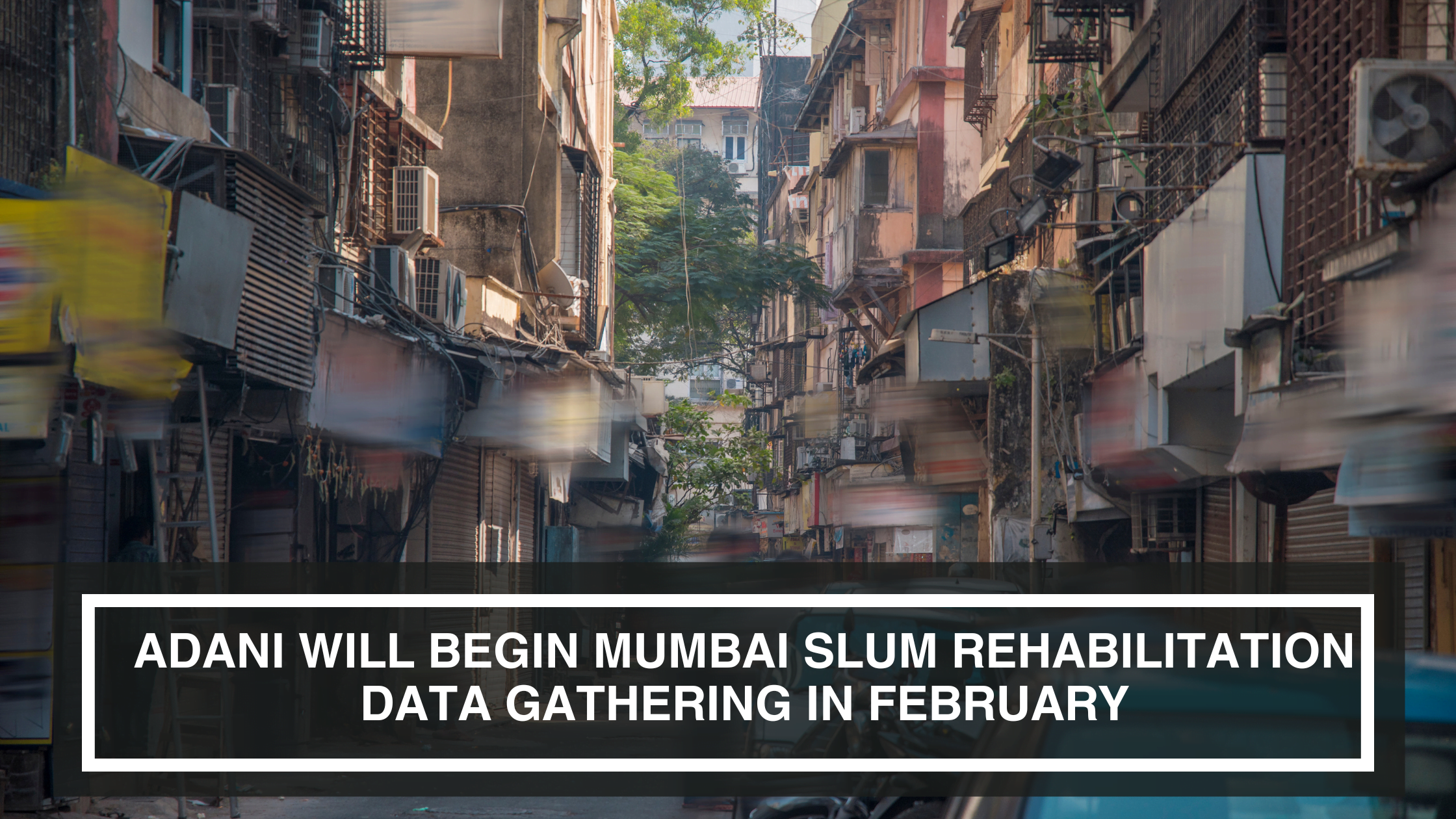
A company headed by Indian billionaire Gautam Adani will begin collecting biometric data and personal information from as many as one million low-income inhabitants in February. This is all part of their plan to renovate one of the biggest slums in Asia, located in Mumbai.
The results of the poll will play a significant role in selecting Adani Dharavi slum inhabitants for the free housing programme in the renovated region. Adani Group and the state of Maharashtra won the contest to reconstruct the 640-acre (260-hectare) land, but there are still lingering legal problems regarding the contract’s granting. Despite this, officials have been struggling to fix up the area for decades.
To qualify for the free dwelling, one must have resided in Dharavi prior to the year 2000. There have been concerns about the livelihoods or hefty rent payments for around 700,000 ineligible residents who might be transferred outside of Adani Dharavi since the last study of the region was carried out fifteen years ago.
S.V.R. Srinivas Outlines Dharavi Survey Plans
According to S.V.R. Srinivas, head of the Dharavi Redevelopment Authority, which is in charge of the project, the Adani-led firm will conduct a door-to-door survey exercise in Dharavi. The purpose of the survey is to collect biometric data, details about the occupants, evidence of ownership, and whether the premises are used for residential or commercial purposes.
“Teams will go to each and every house… biometric data will be collected,” Srinivas said in an interview. “The objective is that all eligible people should get houses and no ineligible people should get an undue advantage.”
The reconstruction has been met with resistance from Indian political parties, who claim that the state government and its supporters unjustly favoured Adani when the business won the $614 million rehabilitation bid. Adani and the state both reject the allegations.
Srinivas has said that he anticipates the reconstruction to start within a year, and Adani has recruited international teams for the project.
The initial element of the survey will consist of a pilot phase that will be carried out with a small sample of people within three to four weeks. Nine months is the duration of the whole exercise.
Srinivas further said that more people would be engaged shortly to manage the survey and project and that Adani Dharavi would decide on the final eligibility of individuals who would be transferred or given free dwellings.
Primary Goals of the Rehabilitation Project
In addition to improving the physical infrastructure, Adani’s slum rehabilitation project in Mumbai aims to improve the economic and social aspects of slum living. Among the most important goals are:
● Modern, well-designed housing complexes will replace the current shacks as part of the revitalisation project’s effort to improve the housing infrastructure. Sustainable and resilient building designs that can endure harsh environments will be the focus
● Numerous people living in slums do not have access to basic necessities, including clean water, sanitation facilities, and healthcare. By incorporating necessary facilities into the reimagined public areas, the initiative aims to close these gaps.
● The rebuilding plan includes initiatives to foster economic empowerment, such as training programs and the establishment of local job possibilities. Economic and social upliftment are the goals of this all-encompassing strategy.
● For any rehabilitation effort to be successful, it is essential that the slum population be actively involved in making decisions. In order to make sure that locals have a voice in how their future homes will look, Adani is trying to encourage community involvement.
The CSR (Corporate Social Responsibility) Initiative of Adani
The Adani Group has grown in its commitment to CSR as it has become a prominent figure in India’s business scene. The slum rebuilding project is in line with the organisation’s larger corporate social responsibility (CSR) objectives, which include efforts in healthcare, education, and environmental preservation.
Adani’s many charitable initiatives demonstrate the company’s dedication to producing shared value, in which business success is linked to society’s welfare. The slum rehabilitation project is an example of this dedication in action since it is a business-led effort to fix a serious social problem.
Possible Effects on Current Models of Urban Development
With its foray into Mumbai slum rehabilitation, the Adani Group may change the way cities are planned all across the world, not just in India. Social infrastructure projects that employ data-driven insights, cutting-edge technology, and private sector involvement might pave the way for comparable endeavours in other areas that are fast becoming urbanised.
If Adani’s strategy works, other companies may start seeing social and urban development initiatives as ways to give back to society, as well as chances to make smart investments that will pay off in the long run.
Conclusion
Adani Group is daringly experimenting with a data-driven approach to urban transformation in the crux of Dharavi, one of Asia’s densest slums. Along with better living circumstances, this massive reconstruction project could mark a breakthrough in inclusive urban planning.
The Adani Dharavi initiative sets an example of revolutionary leap forward in urban planning thanks to its dedication to inclusive development and state-of-the-art data-collecting methods.





